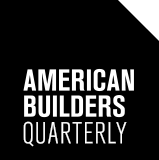
We have a very simple business model. We’re a high-volume, low-cost retailer of fuel, tobacco, and other convenience-store merchandise. We sell through kiosks and other small-format stores, which means we have lower overhead, lower operating expenses, and lower capital costs. That allows us to sell at lower prices, and if you’re selling at lower prices, you’re able to sell three to four times the volume of fuel and tobacco—and still at good margins.
Our relationship with Walmart began in 1996. For a long time, Walmart was seeking a low-price gasoline and tobacco proposition, but those were two categories the company wasn’t going to be as engaged in, so having a partner was its strategy. We met with Walmart and described what was going on in Europe, with gasoline being sold in front of large supercenters such as Tesco and Carrefour. We said, ‘Let’s work together to create a similar consumer value proposition in the United States.’
 We built our first Walmart site in 1997. We didn’t have a large existing retail network with which this model would compete, so we could really build the business model from a clean sheet of paper. From the late 1990s through 2005, we experienced rapid growth. We agreed to a contract to build 200 sites in December 2012, launching our current wave of growth. At one point, we were putting 125 gas stations in front of or near Walmart per year. We now have more than 1,200 sites at or near Walmart.
We built our first Walmart site in 1997. We didn’t have a large existing retail network with which this model would compete, so we could really build the business model from a clean sheet of paper. From the late 1990s through 2005, we experienced rapid growth. We agreed to a contract to build 200 sites in December 2012, launching our current wave of growth. At one point, we were putting 125 gas stations in front of or near Walmart per year. We now have more than 1,200 sites at or near Walmart.
We acquire the real estate in different ways. In some cases, Walmart has acquired parcels of land around its supercenter lot and sells those to us. In other cases, Walmart carves out part of its supercenter parking lot and assigns it to us. Or, when Walmart has the supercenter lot or outlot under lease, it leases us space. When Walmart doesn’t have a space to offer us, we buy or lease an outlot from a third-party developer—but because the site isn’t connected to the Walmart discount-gasoline program, we brand it directly: Murphy Express instead of Murphy USA. Around 10 percent of our locations are Murphy Express.
Standardization is important. We have primarily two formats: 208-square-foot kiosks with coolers in front and 1,200-square-foot stores—1,400 square feet in jurisdictions that require two restrooms. We focus on these two formats, which allows our design-build partners to get stores up quickly—typically under 100 days, weather permitting, but less than 60 days is possible. And, standardization inside stores allows us to get labor trained quickly, which ramps up sales. So, we have a good view going in of our capital costs and expected returns. As a result, we get up to run rate much more quickly. A lot of our competitors who build 5,000- to 7,000-square-foot stores will tell you it takes three-plus years to reach run rate.

We largely sell items that are complementary to Walmart. At first we sold largely gasoline and tobacco, but we evolved to sell other items like beverages and snacks—but we still largely sell single-serve beverages versus gallons of milk or liters of soda, cans of beer versus cases. Offering tobacco outside the Walmart store is also beneficial because there’s typically only one tobacco checkout lane in Walmart.
We see a four percent to six percent decline in cigarette volume year on year. But, we’ve been able to offset the gross-dollar-margin decline through sales of other products. Candy, like chocolate, has to be kept in coolers in hot summer months, so we’ve added coolers in front of kiosks. We’ve also built out our 1,200-square-foot stores, which have more space for snacks. We also have innovative promotions with suppliers, like ‘buy three drinks and get 10 cents off a gallon of gasoline.’ That’s helped offset the decline in cigarette sales.
The biggest trend that affects us is the overall economy. Like Walmart, we’re selling to value-oriented consumers, and they’ve been hit hard by the recession. They’re struggling. That said, when you have high fuel prices and increasing taxes on various items and the price-sensitive segment of the market is growing, being the low-price retailer is good because that’s where people find the greatest value.




